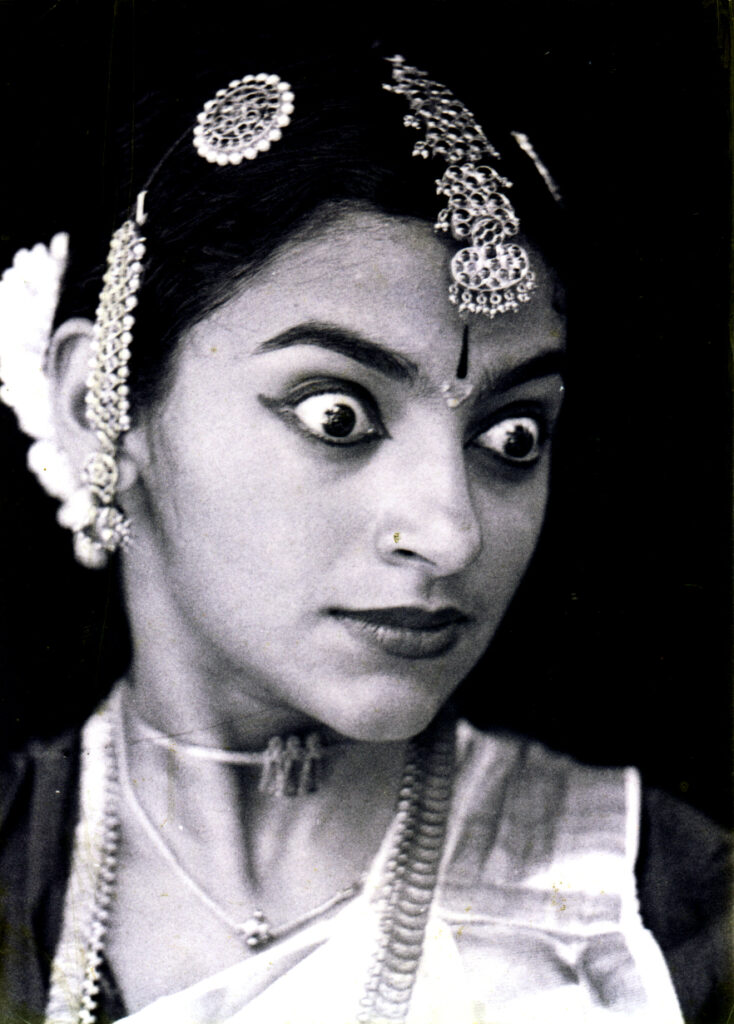This article delves into the nuanced choreography of expressive abhinaya of Padams.
The item Padam comes after Varnam in a Mohiniyattam concert. A dancer can include as many Padams in her concert as her stamina, acting abilities, and the available time permit. Having elevated the spirit through items like Cholkettu, Jathiswaram, and Varnam, the role of Padam is to bring the human spirit or soul as close as possible to the cosmic spirit or Paramatma. The human soul slowly starts to recognize the boundless Paramatma. The final goal of any human soul is to merge with the Paramatma and be one with it. Corresponding to this, the themes of most Padams include a Nayika symbolizing the jeevatma and her beloved – the Paramatma.
The themes of Padams usually revolve around the pursuits of the Nayika, who is temporarily separated from the Nayaka, to be reunited with him. Often, another character, a friend of the Nayika, features in the Padam narrative. The Sakhi symbolizes a Guru, who is quintessential in Hindu philosophy to guide you to Paramatma.
Usually, Padams have only a few lines of lyrics. The dominant bhava of Padams is Sringara or Bhakti. Often, the Nayika is initially upset about being separated from her beloved. The dancers have ample opportunity to use their imagination to express the anguish of a separated Nayika. It takes an expert and involved dancer to successfully portray such emotions.
The ability for involved acting can be compared to water’s ability to dissolve the solvents added to it and be part of it. When a dancer evokes the Sringara or Bhakti rasa, she becomes one with it. Sringara bhakti and Madhura bhakti are the dominant emotions we usually see in Padams. This often has secondary emotions like anger, sorrow, and pain associated with it.
A successful Padam choreography should have these emotions interwoven into the key narrative of the Padam. The choreography largely focuses on the Abhinaya, with Nritha limited to subtle movements sufficient to evoke the emotions. In the choreography of Padams, which succeed Varnam, the exposition of abhinaya assumes greater prominence. In this portion, pure dance is virtually absent.
The Padam texts are simple and suited to the spirit of the relevant ragas. They contain the sections called Pallavi, Anupallavi, and Charanam. The unison of jeevatma with paramatma yields penultimate joy. The 5th item of a concert, Tillana, is performed to represent this state of joy.
Assisted by: Sreekanth Kartha
Photo Courtesy: Natanakairali Archives

